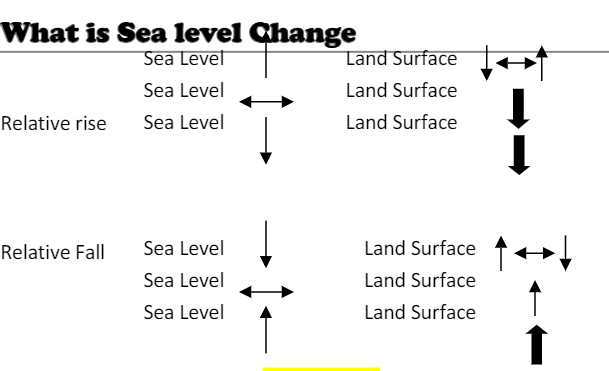Physical Geography
Volcanism
⦁ What is Volcanism?
Volcanism Includes all the phenomena connected with movement to molten material from beneath to the ‘surface. Thus it includes
⦁ generation of Magma;
⦁ intrusion of Magma; and
⦁ extrusion of Magma and associated materials
⦁ Distribution
⦁ Ridge volcanism
⦁ Arc volcanism-Kamchatka, Kurile, Japan, Philippines, Celeba new Guinea, etc.
⦁ Volcanic Chains-straight line volcanoes associated with fold mountains.
⦁ Volcanic clusters-
On Ocean-Madeira, Galapagos, Canary, Azores, Reunioh.
On Continents – Ethiopia, East African rift valley
⦁ Volcanic lines- Dominantly extinct lines of volcanoes, Emperor seamount, Line Tuamotu
Generation of magma
What is magma? –Magma is Kneaded mixture, but any hot mobile material is called magma.
Nature of magma–It is molten silicate, not entirely liquid but a mixture of solid, liquid and gas.
Important components: SiO2, H20, Al, Ca, Fe, Mg, Na k, of which Si is the most important
⦁ Magma is of many types:
⦁ Granitic having 70%, Sio2-It is viscous, having a temperature <800°C.
⦁ Basaltic magma having 55-60% silica content is more fluid and mobile 1200°C.
⦁ Alkaline-high ratio of Na/K to silicon.
Generation of Magma
⦁ Increase in heat
⦁ local concentration of radioactive elements
⦁ energy from earthquakes
⦁ frictional heating
⦁ P/T disequibrium
⦁ Role of water
Intrusive features
⦁ Major
⦁ Concordant: Lopolith
⦁ Discordant: Batholiths with associated bosses and stock, stoping, xenoliths cupolas
⦁ Minor
⦁ Concordant:
⦁ Sills,
⦁ Laccolith,
⦁ Bysmalith,
⦁ Phaccolith
⦁ Discordant:
⦁ dykes,
⦁ ring, complexes to include cone sheets,
⦁ ring dyke,
⦁ dyke swarms,
⦁ dilation dykes, and couldron subsidence,
⦁ volcanic neck, diapers,
Products
⦁ Gases- H2O lahars H2S, acids
⦁ Lava- Basaltic and grantitic basaltic flow can be aa, pahohoe and under water eruption called pillow lava.
⦁ Pyroclastic materials-called tephra, ejection includes-bombs, blocks, lapilli, ash, nuees ardentee
Extrusive Features
⦁ Formed of Fissure Eruption
⦁ Flood basalts
⦁ pressure ridges,
⦁ lava tunnels
⦁ spatter cones
⦁ Central Eruption includes effusive form, explosive form, collapse form and exhalative form
⦁ Effusive forms
⦁ shield volcano
⦁ Cumulo dome
⦁ Plug Dome
⦁ Tholoid
⦁ Explosive form
⦁ ash or cinder cone.
⦁ Composite cone,
⦁ Parasitic cone
⦁ Ash Flow, Ignimbrite Plateau
⦁ Collapse form
⦁ crater
⦁ nested crater
⦁ caldera
⦁ nested caldera
⦁ Exhalative form
⦁ hot springs
⦁ geysers, intermittent eruption
⦁ fumaroles, continuous jet-like solfataras
⦁ Mud volcanoes
⦁ Pseudo volcanic features
⦁ Environment and volcanoes- jokulhaup, tsunami
URBAN CLIMATE
Introduction
⦁ Urban climate is the study of atmospheric phenomena attributable to human settlements.
⦁ Clearest example of man’s role in climatic modification.
⦁ Urban structures create microclimates of their own, collection of which is urban climate.
⦁ UCL – Urban Canopy Layer – air layer below roof level.
⦁ UBL – Urban Boundary Layer – extent of urban local effect.
Influence of Urban Climate
⦁ Urban Heat island Circulation
Due to
(i) of long-wave radiation by pollution Absorption
(ii) atmosphere. Sky view factor
(iii) Concrete stores greater heat
(iv) Anthropogenic heat from building sides
(v) Decreased evaporation
(vi) Decreased loss of sensible heat.
⦁ On winds –
Roughness and Thermal Influence
May retard weather fronts strong across Winds analogous to land and sea breeze vortices gustiness or jets in non-sheltered areas converging at centre
3. On Urban Energy System
⦁ Lack of vegetation → channelling more energy into sensible rather than latent heat.
⦁ Urban heat island due to –
⦁ Increased counter-radiation due to pollutants.
⦁ Reduced sky-view factor → low outgoing radiation.
⦁ Building material storing more heat.
⦁ Anthropogenic heat from building sides.
⦁ Decreased evaporation due to non-vegetated surface.
⦁ Magnitude of heat island varies diurnally; in response to weather; and city size.
4. On Moisture –
⦁ As compared to the countryside, daytime moisture is lower due to less evaporation and more mixing.
⦁ Reverse is true for night due to lesser dewfall and vapour from combustion.
⦁ But in high latitude cities in winter due to frozen surface humidity is largely governed by vapour from combustion & hence more humid in both day & night.
⦁ Precipitation –
⦁ Cities enhance precipitation downwind areas especially in case of convective rainfall may be due to –
⦁ Altered microphysics of urban clouds &/or
⦁ Cloud dynamics changed by UBL
⦁ Exact role is difficult to determine.
PRESENT STATUS OF URBAN CLIMATE.
⦁ Little knowledge of tropical urban climates.
⦁ Its failure to develop applied science aspects.
SEA LEVEL CHANGE
Importance of Sea Level
⦁ Navigation to harbors, canals, waterway
⦁ Inundation or exposure of beach
⦁ Rate and pattern of coastal erosion
⦁ Stability of estuary for residential and industrial development
⦁ Suitable areas for reclamation
⦁ Tidal power generation
⦁ Storm surges in Coast
Mechanism of sea level change
Long term changes
⦁ Changes in ocean water volume
⦁ Melting of Ice bergs
⦁ Temperature changes
⦁ Changes in Ocean Basin volume
⦁ Sedimentation on the ocean floor
⦁ Trench formation
⦁ Subsidence of oceanic crust
Can be ignored as offset by subduction
⦁ Uplift of mid oceanic crust
⦁ Increase or decrease in the length of the ridge system






